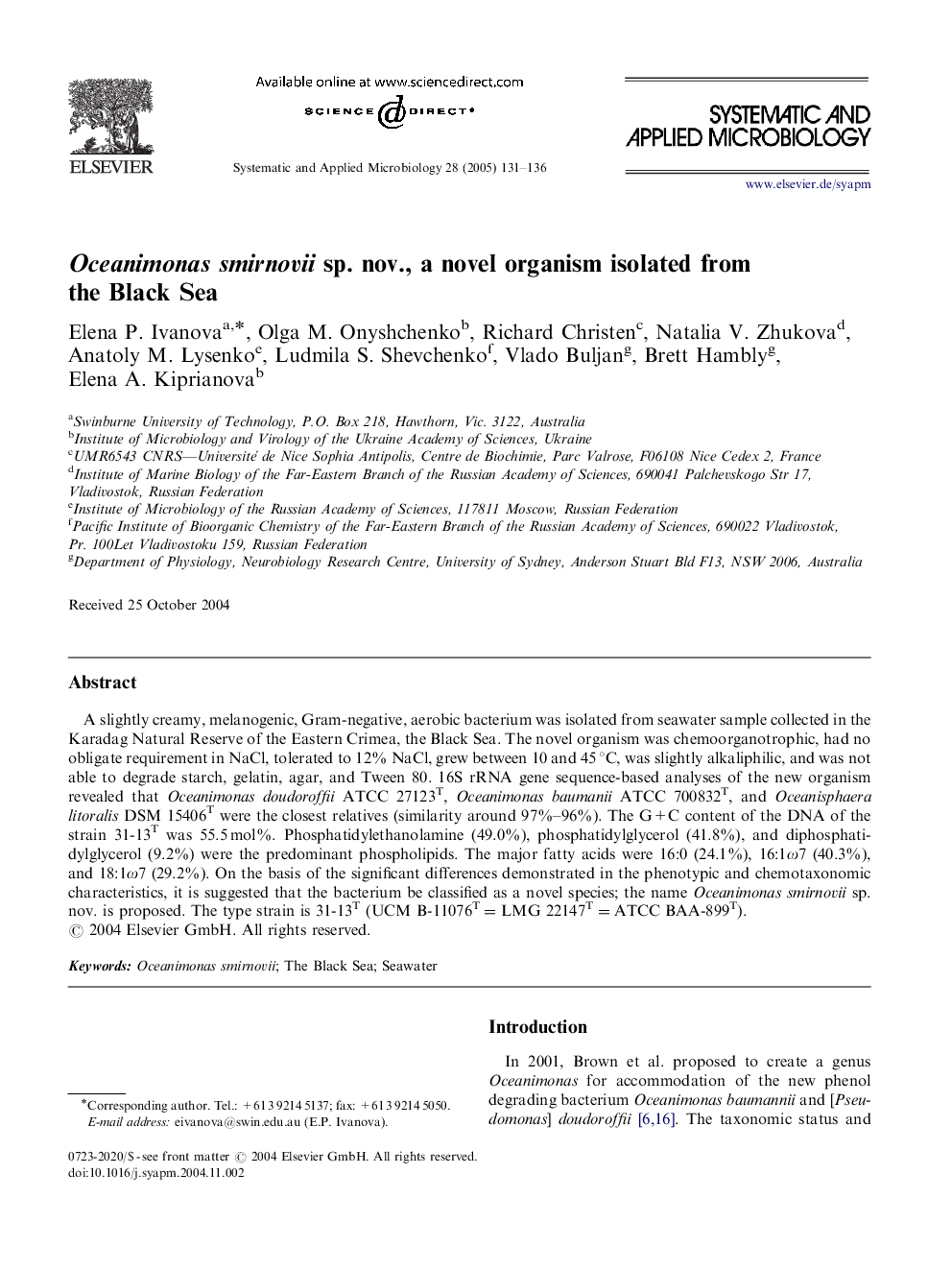| Article ID | Journal | Published Year | Pages | File Type |
|---|---|---|---|---|
| 10879831 | Systematic and Applied Microbiology | 2005 | 6 Pages |
Abstract
A slightly creamy, melanogenic, Gram-negative, aerobic bacterium was isolated from seawater sample collected in the Karadag Natural Reserve of the Eastern Crimea, the Black Sea. The novel organism was chemoorganotrophic, had no obligate requirement in NaCl, tolerated to 12% NaCl, grew between 10 and 45 °C, was slightly alkaliphilic, and was not able to degrade starch, gelatin, agar, and Tween 80. 16S rRNA gene sequence-based analyses of the new organism revealed that Oceanimonas doudoroffii ATCC 27123T, Oceanimonas baumanii ATCC 700832T, and Oceanisphaera litoralis DSM 15406T were the closest relatives (similarity around 97%-96%). The G+C content of the DNA of the strain 31-13T was 55.5 mol%. Phosphatidylethanolamine (49.0%), phosphatidylglycerol (41.8%), and diphosphatidylglycerol (9.2%) were the predominant phospholipids. The major fatty acids were 16:0 (24.1%), 16:1Ï7 (40.3%), and 18:1Ï7 (29.2%). On the basis of the significant differences demonstrated in the phenotypic and chemotaxonomic characteristics, it is suggested that the bacterium be classified as a novel species; the name Oceanimonas smirnovii sp. nov. is proposed. The type strain is 31-13T (UCM B-11076T=LMG 22147T=ATCC BAA-899T).
Keywords
Related Topics
Life Sciences
Agricultural and Biological Sciences
Ecology, Evolution, Behavior and Systematics
Authors
Elena P. Ivanova, Olga M. Onyshchenko, Richard Christen, Natalia V. Zhukova, Anatoly M. Lysenko, Ludmila S. Shevchenko, Vlado Buljan, Brett Hambly, Elena A. Kiprianova,
